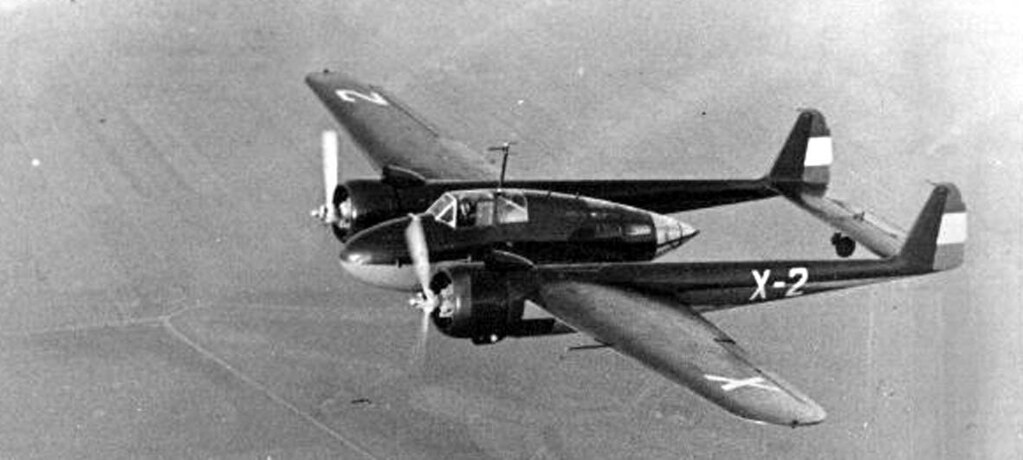#douhet
Explore tagged Tumblr posts
Text


So, the MS-19 Dolmel.
First appearing in the videogame Mobile Suit Gundam: EX Revue, it is a prototype space assault mobile suit developed at the space fortress A Baoa Qu. It was supposedly deployed at the Battle of Solomon and the Battle of A Baoa Qu, whereupon one unit (piloted by Ramuiko Stein) was shot down by Amuro Ray in the Rx-78-2 Gundam. It is notably the first mobile suit made specifically for a videogame, making it the out-of-universe ancestor of a great many things.

The Dolmel was armed with multi-launchers built into its arms (essentially a precursor to the combination beam gun/beam sabers seen on many later Neo Zeon units, like the Qubeley), four missile pods (two on the shoulders, two smaller models built into the chest), toe beams (short beam sabers mounted on the feet) and Heat Piles (the shoulder spikes were able to be heated to increase damage during shoulder bashes).
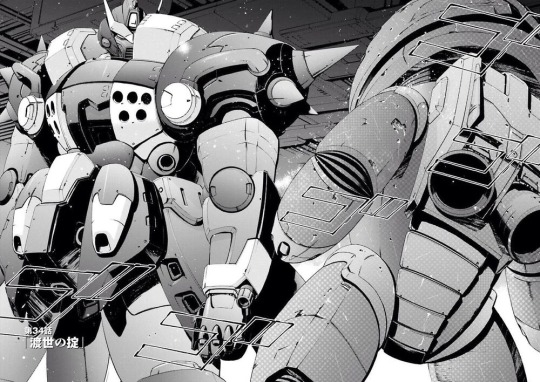
The Dolmel would later be reproduced (along with several other old war materials) by the organisation True Federal in 0083, where it would be modified into the Dolmel Douhet (/Doue), and piloted by the Organisation’s Leader, Richard Grayson. This modified Dolmel was fitted with a more Gundam-style head, which contained a Demon Blade System (yet another derivative of the EXAM System). It also slimmed down the original’s multi-launchers considerably. Out-of-universe, it’s presence as the main suit of the organisation is due to True Federal’s (and Gundam Katana in general’s) theme of using mobile suits that originated in videogames (like the GM Juggler, Gundam NT-X “Netix” and Mass-Production Big Zam). Since it was the first created, it’s the suit used by the head.
(Also, I am aware that the Dolmel Douhet/Doue has several other subtle design differences to the regular Dolmel, but the artstyle lends itself to list of rounded features compared to the norm, so I couldn’t say with confidence what’s a change and what’s artistic interpretation)
Design-wise….. I honestly struggle with the Dolmel’s design. I keep going back-and-forth on disliking it and being fairly ambivalent towards it. It can’t escape the fact that it was made for a fighting game, it’s weapons, style and even its colour schemes scream it’s origin loud and clear.
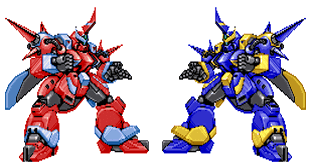
It’s obviously designed to have a distinct, imposing silhouette, it armaments designed to leave its hands free and expressive, an eye-catching colour scene to pop with the scenery, and leave little doubt as to where it is at any given time. The design influences of Zeon are clear, since it looks like an up-built Zaku with some additional parts- fitting for a Zeonic Prototype unit. I like the missile launchers and the multi-launchers in the arms, but I honestly find the toe beams and heat piles a little silly (heat weaponry typically degrades with use, so you’d have to swap out the shoulder spikes periodically. It’s part of the reason everything started using beam weapons around the time of ZZ). I think the later artwork (i.e. the one at the top) does a wonderful job of making it look like something Zeon would actually build though.
So why am I talking about it? (Especially pointed since it shows up in Gundam Katana)
Well, I had a dream the other night, and while it wasn’t the focus, apparently the best my subconscious could pull up was the Dolmel, so I figured I’d do a post on it to get it off my mind.


#gundam#ramblings#Dolmel#Dolmel Douhet#Gundam Katana#Gundam: EX Revue#I really wanted to talk about Mayasaya Nakagawa but I can barely find any information.#I might edit this later to reflect new information
4 notes
·
View notes
Text
Dans les pertuis

View On WordPress
#Île d&039;Aix#Île d&039;Oléron#Île de Ré#Boyardville#Charentes#Fort Boyard#L&039;Île Penotte (Sables d&039;Olonne)#La Rochelle#Le Douhet#Les Minimes (port)#Les Sables d&039;Olonne#Marina Quai Garnier (Les Sables)#Phare des Baleines#Port La Vie (St Gilles)#Sion sur l&039;Océan#St Gilles Croix de Vie#St Martin de Ré#Vendée
0 notes
Text
Strategic bombing – from Douhet to drones
Introduction Gulio Douhet and bomber mafia Italian general Gulio Douhet was, along with UK politician Stanley Baldwin (who said that “bomber will always get through”), German general Walther Wever, US general Billy Mitchell and UK marshal Hugh Trenchard, one of main advocates of idea that strategic bombing can win war. Ideas were as following: war can be won entirely by destruction of enemy…
View On WordPress
#aviation#bomber mafia#drones#Gullio Douhet#history#libya#nuclear deterrence#strategic bombing#UAV#war on terror#World War 1#World War 2#world war 2 bombers
0 notes
Text
fun fact about the rouge one shot
commander douhet is named after giulio douhet, an italian general during WWI who was arrested for criticizing his superiors because he believed they weren't using their air force to its full potential. he advocated strongly for using bombers on enemy cities to break stalemates as well as the will of their populations. at the time period, he was one of the first to advocate for strategic bombing campaigns on cities.
it is worth noting that the difference between "civilian" and "military" casualties only came into existence in the post-WWII era. until that period, european military leaders did not distinguish between the two groups since civilians were often just as involved in the war effort (they farmed the food that was sent in soldiers' rations kits, manufactured their weapons and munitions, etc) and also because they didn't really care lol. i have actually read excerpts from douhet's power of the air wherein he literally advocates for bombing civilian centres. his theory correctly predicted many of the bombing campaigns seen in WWII, such as the bombing of dresden (in which the british dropped so much artillery on the city of dresden that its river literally dried up from the heat) and the us fire bombing of tokyo. ironically enough, the us army actually expressed a bit of moral outrage over britain's campaign in dresden, since the us army's modus operandi at the time was to conduct daytime strikes on industrial targets rather than urban ones, but this attitude clearly did not hold out by the time they were focused on defeating japan lmao.
anyways, douhet was ahead of his time military-strategy wise and died before WWII began, which i can honestly only compare to van gogh dying before any of his works became famous. i would call this a tragedy (jokingly) but the last thing anyone needed was for this guy to be in charge of the italian air force during WWII so its probably good that he checked out early
#what if i rambled about the history of strategic bombing on my sonic blog...#did you know that when zeppelins were first invented that the major european powers immediately banned using them for military purposes#this only lasted for around five years though#the idea of using zeppelins in war was so terrifying because for the first time ever#cities could be attacked without first defeating the country's army#truly mind blowing at the time#redposts
11 notes
·
View notes
Text

Quando guardo una città rasa al suolo dai bombardamenti, come in questi giorni G4za, non posso fare a meno di ricordare quanto segue, che scrivo più o meno ogni 4 novembre.
La data di oggi, infatti, continua ad essere una delle occasioni di retorica nazionale italiana che sinceramente mi lascia sempre un po' a bocca aperta. I vertici istituzionali si recano alla tomba del milite ignoto per ringraziare coloro che “hanno dato in sacrificio la vita per DIFENDERE la patria”. Si enuncia che la pace dipende dalle forze armate, cui va la gratitudine dei vertici dello stato. Corona de fiori, inno nazionale, frecce tricolori foto di rito e via, tutti a pranzo.
Peccato che quel milite sia morto in una guerra, la c.d. Prima Guerra Mondiale, in cui non c’era niente da difendere: è l’Italia ad aver aggredito l’Austria con cui, assieme alla Germania, era formalmente (seppur segretamente, come si usava allora) alleata.
[Per chi ha tempo, faccio un breve sunto dell’entrata in guerra italiana e dell'esito che ebbe questa mossa nel primo commento*]
Oggi potremmo ricordare che il portato del nazionalismo e della guerra è stato un mare di morte, distruzioni e strascichi di violenza. Che nella guerra mondiale tutti gli eserciti persero, e che quindi non ha senso ricordare solo “i nostri” e sventolare bandiere nazionali. Specie quando si è stati protagonisti-aggressori nel massacro. Specie sapendo che solo una parte dei caduti venne identificata e recuperata in quella strage di milioni di ragazzi e, come diceva George Mosse, l’anonimato delle salme permise di sottrarre quei morti al culto delle famiglie e di affidarle al nuovo culto crescente della nazione.
In Italia, dopo tutto questo tempo, come lo ricordiamo questo avvenimento? Appunto, con l’omaggio al milite ignoto, festeggiando le forze armate come strumento di pace (Orwell, sei tu?), e con le frecce tricolori (uau). Senza dubbio esse sono esteticamente attraenti, ma secondo me rischiano di contribuire a un’ulteriore, drammatica, rimozione: una delle conseguenze di quella stagione, infatti, fu l’invenzione italiana della guerra aerea come GUERRA TOTALE.
Grazie al generale Giulio Douhet questa nuova possibilità fu teorizzata nero su bianco, e attraverso le forze armate italiane fu messa in pratica, in primis nelle colonie (l’esercito italiano gasò interi villaggi d’oltremare). In realtà già nel 1911, quindi addirittura prima della Grande Guerra, combattendo l’Impero ottomano in Nord Africa, il sottotenente Giulio Gaviotti lanciò delle granate dal suo aereo, compiendo il primo bombardamento aereo della storia dell’umanità. Atto esaltato anche da D’Annunzio nella Canzone della Diana:
"[...] e tu Gavotti, dal tuo lieve spalto
chinato nel pericolo dei venti
sul nemico che ignora il nuovo assalto!"
Con la Prima Guerra Mondiale e gli scritti di Douhet, dall’Italia si arrivò a suggerire al resto del mondo la guerra aerea come nuova frontiera del combattimento totale: “Se per vincere è necessario distruggere, uccidere, devastare, spandere la rovina e il terrore, tutto si faccia […] è utile al fine supremo”. Scriveva Douhet. E ancora: [Se nella guerra tradizionale] vi era perfino una distinzione legale tra belligeranti e non belligeranti […]. [Con la guerra aerea] poco interesserà, data la sicurezza della distruzione, che qualche bomba vada fuori dal bersaglio. […] La distruzione completa dell’obbiettivo prescelto, oltre all’effetto materiale, produce un effetto morale”. E per concludere: “Per giungere a distruggere, completamente e rapidamente, una razza di uccelli, non è sufficiente abbattere tutti quelli che [si] incontrano in volo. […] rimangono sempre i nidi e le uova”.
Capito come? Una volta individuato e de-umanizzato il nemico (in questo caso con l’artificio retorico dell’animalizzazione: non sono esseri umani, ma uccelli… altre volte cani ecc…), grazie agli aerei non ci dovevamo limitare ad ammazzare i soldati, ma potevamo finalmente ammazzare tutti, anche donne e bambini che stanno dentro le case, per essere sicuri di annientarli definitivamente e non ritrovarceli più come problema in futuro.
Forse oltre che guardare aerei da guerra che colorano l’orizzonte, il 4 novembre potremmo ricordare che noi italiani abbiamo inventato la GUERRA TOTALE DAL CIELO, che tanta parte ebbe nel Secondo conflitto mondiale; il quale, di nuovo, ci vide aggressori e di sangue ne fece scorrere ancor di più (proprio a causa delle nuove tecnologie). Conflitto che si concluse a Hiroshima e Nagasaki, con la svolta epocale dalla quale non c’è stata più possibilità di ritorno. Ancora ai nostri giorni, infatti, il fragile equilibrio che impedisce il tutti contro tutti è basato sul terrore della deterrenza nucleare. Ancora ai nostri giorni, inoltre, la pratica di bombardare cittadine e cittadini inermi è pratica diffusa, è terrore istituzionalizzato.
Personaggi come Giulio Douhet potrebbero forse essere riconsiderati alla luce della consapevolezza odierna e dei valori che (almeno a parole) diciamo di difendere, invece che essere ricordati - come facciamo a Roma - con un ampio piazzale nel quartiere dell’EUR.
Le conseguenze di quel tipo di mentalità sono sotto i nostri occhi: le nostre società sono ancora fondate sul dominio, sulla legge del più forte, sulla sottomissione e (se serve) sull’uccisione di chiunque abbia qualcosa che crediamo spetti a “noi” invece che a “loro”. Siamo di nuovo circondati da guerre locali ma violentissime, che da un momento all’altro rischiano di “allargarsi” a una sfera regionale e poi mondiale.
Nel frattempo abbiamo un enorme problema legato a come prendiamo le decisioni in merito: tra le popolazioni civili, infatti, la maggior parte delle persone è favorevole a ricercare innanzitutto il “cessate il fuoco”, come primo passo per capire come risolvere i problemi; i vertici istituzionali e militari dei paesi in cui queste maggioranze vivono (compresa l’Italia), invece, promuovono e praticano la guerra stessa come soluzione. Dolorosa e costosa, certo, ma necessaria (e inevitabile).
Vorrei ricordare solo che la guerra è quel meccanismo che propone l’eliminazione fisica dell’altro come risoluzione dei problemi di convivenza. Non è così difficile comprendere come mai, nonostante tutti i buoni propositi, i problemi non si risolvano praticamente mai. Anzi, ogni giorno la situazione sembra peggiorare.
Inoltre, ci sarà sempre qualcuno per cui “l’altro siamo noi” e che potrebbe volerci fare fuori. Si spiega in questo modo perché chi ammazza e usa la forza distruttiva lo fa praticamente sempre dicendo che sta semplicemente DIFENDENDOSI. Che sta difendendo la sua parte.
O come esseri umani, tutti, si scende da questa giostra, oppure, temo, di futuro ce ne sarà sempre meno.
Forse in un posto come l’Italia, che è fuori dall’epicentro dei principali conflitti, potremmo provare a inventare qualcosa di nuovo. Perché ok le manifestazioni di solidarietà, ok i cortei con le bandiere e le amplificazioni per gridare slogan quasi sempre tagliati con l'accetta. Manifestazioni che non voglio criticare. Per me vanno bene anche loro, colgo in molte persone il desiderio di fare qualcosa. Al contempo, temo che finché siamo in queste modalità, quando ci attiviamo senza aver prima trovato un momento per contattare il nostro dolore collettivo, siamo ancora sulla solita giostra.
Forse organizzare un momento pubblico diverso, non so, un appuntamento funebre, possibilmente SILENZIOSO in cui non ci sia nessun* che parla da sopra un palco ma stiamo tutt* allo stesso piano, senza camion, senza amplificazioni; un giorno in cui gli uffici pubblici e gli enti locali si mettono a lutto, le scuole si fermano in silenzio anche loro per qualche minuto. Tutto questo per ricordare e piangere TUTTE LE PERSONE morte nelle ultime settimane, sia quelle morte in Isr4ele per mano di Ham4s e soci, sia quelle morte sotto le bombe israel1ane nei giorni successivi. Chiedere a tutti i protagonisti di questa escalation, che hanno la possibilità di innescare e disinnescare le armi, quasi tutti maschi e quasi tutti al sicuro “nei loro fortini del potere”, di fermare il fuoco.
Quasi sicuramente non servirà ad ottenere nulla di concreto, perché credo che a questi uomini interessi ben poco di persone che li pregano di far tacere le armi, ma almeno avremo smesso di fare analisi e interpretazioni su chi è vittima e carnefice, su chi ha ragione e chi ha torto e per un giorno, almeno, avremo smesso di sventolare (mentalmente o fisicamente) qualunque bandiera nazionale, perché a mio avviso sono quelle bandiere una delle principali cause profonde di questo enorme cimitero in espansione.
E se non riusciamo a farlo in grande, con le istituzioni nazionali, facciamolo laddove abbiamo qualche amministrazione "amica", oppure facciamolo semplicemente tra cerchie ristrette di persone affini. Facciamo silenzio insieme e piangiamo queste morti. Abbiamo già evitato di farlo con i morti ucraini e russi. Prima avevamo evitato di farlo per i morti di covid.
Prendiamoci questo tempo di lutto, che a mio avviso ci aiuta a riconnetterci con la nostra comune umanità.
Quella che non si può rinchiudere in nessuna bandiera.
Urbano Grandier, Facebook
5 notes
·
View notes
Text
CW for war, bombing, and descriptions of horror.
Valentine's night is the anniversary of one of the most controversial events of the Second World War, the bombing of Dresden. The Combined Bombing Offensive itself is profoundly controversial, the morality of it debated and questioned for nearly 80 years now.
Dresden is a lightning rod to both the far left and right, though for different reasons. The left use it to accuse the arch imperialist, Winston Churchill of being a war criminal. Neo-Nazis use it to say that Germany was innocent and German civilians were the real victims of genocide. And there are others beyond these people, who remember because they either know the full story, or don't, because they know something awful happened that should be commemorated and we should do everything we can to prevent anything like it happening again.
youtube
This is footage of a raid on Pforzheim that took place shortly after the attack on Dresden. A small town in southwest Germany, very little of pre-war Pforzheim remains, because the RAF destroyed 83% of the town that night, and killed a quarter of it's population in ways identical to what happened in Dresden. The tactics and manner of the raid were the same. But Dresden is widely remembered and Pforzheim is not.
And this is because Josef Goebbels intended for Dresden to be.
The Nazi propaganda apparatus made Dresden world famous, inflating the death toll and it's effects, to portray Germany as the victim of Allied aggression. Holocaust denier, anti-semite and goat-fucking piece of shit, David Irving repeated Nazi lies (and added a few of his own) when he wrote about the raid in the 60s. Kurt Vonnegut, who was in the city that night and survived the raid, used Irving's account as source material when writing Slaughterhouse Five.
The myths have taken root while the truth is as horrific, if not worse.
Dresden and Pforzheim were stops on a long line that began with Zeppelins in 1915 and went through towns and cities including Guernica, Rotterdam, Coventry, Hamburg and Tokyo before ending at Hiroshima and Nagasaki.
Airpower was a novel concept in The Great War, the technology undeveloped. The Germans bombed the UK, killing 1,414 civilians, and - less well known - the British dropped 660 tons of bombs on Germany. Bombing was largely ineffective, in strategic terms, achieving little, but heralded an era where the aeroplane would dominate.
Between the wars, influential theorists like Giulio Douhet predict the destruction of civilisations, entire wars decided by countries being bombed into dust, their populations giving up en masse under a rain of bombs. These ideas are very seductive to interwar generals and air marshals, starved for funding and relevance, and give rise to a generation of proponents eager, when they get the chance, to win a war with air power alone.
The Germans try and, their air force not designed, equipped or led for the task, fail. The Blitz will kill thousands of British civilians and cause great suffering, but does not bring about the collapse of the UK's economy, nor break the morale and will to resist of it's people.
(This gives rise to a strange and awful exceptionalism. When it is pointed out that bombing had not broken Britain's population, and expecting it to do so to Germany's was a shaky idea, this will be dismissed. The British are made of sterner stuff than the German, you see; and, if it hasn't worked so far, this is merely a case of not enough bombs having been dropped and shows the need for vast numbers more to be dropped.)
It will be the British and Americans that truly attempt to bomb their enemies into submission.
The strategies differ. The Americans prefer to fight in daylight, concentrating attacks against industrial and transportation targets, claiming a precision to their attacks that doesn't exist in practice. They use close formation as defence, their bombers equipped with large numbers of machine guns to fight back against German interceptors. Later, they use escort fighters to engage the Germans and, in huge air battles in late 1943 and early 1944, they break the Luftwaffe's ability to contest the air.
The RAF operates differently. Bomber Command flies by night, and targets population centres. Navigating to target is a problem. They struggle to drop bombs within 5 miles of the target and it is only with the coming of large, four-engined bombers and a new leader in Arthur Harris that the campaign coheres in 1942 and 1943.
Harris is a demagogue, steadfastly refusing to allocate his aircraft to tasks he sees as distractions from the main effort of destroying German cities. He will fight the navy, who want him to bomb German U-Boat bases and who need long-range aircraft to patrol the Atlantic. He will argue against bombing the U-Boat's bases in France. His crews will call him 'Butch'. Not out of affection, but for his seeming indifference to the appalling losses they suffer. It is short for 'Butcher'. But he is a very effective administrator and moulds a new, highly destructive force that will lay waste to Germany.
They study the construction of German buildings, calculate the correct mix of high explosive and incendiary bombs and determine how best to make cities burn. Their bombers carry 4,000lb blast bombs nicknamed cookies and small incendiary bombs. The cookies devastate buildings and roads, creating craters, rubble and huge obstacles that hinder rescue and fire-fighting. But that is not their main purpose. The shock wave from their explosions blow out doors and windows in a large area, creating airflow for fires. The RAF drop 68,000 cookies on Germany and 3 million phosphorous incendiaries, because phosphorous cannot be extinguished by water. Bullet-shaped, they punch through roofs, into attics, offices, shops and homes, setting fire to whatever they can, wherever they land.
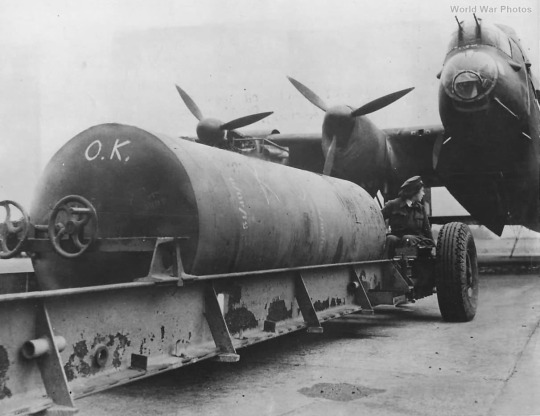
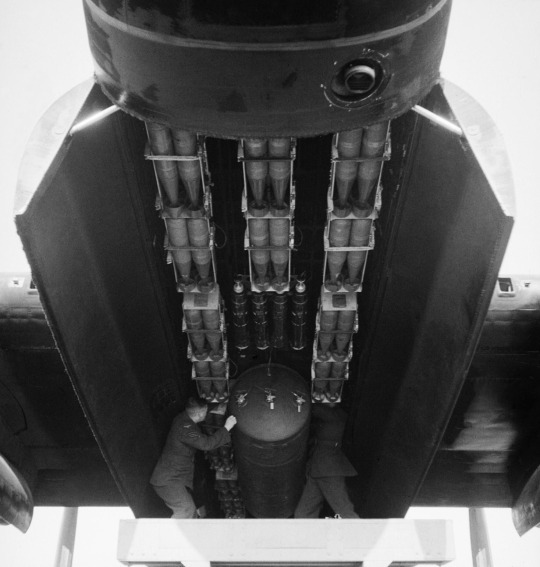
In the footage of the Pforzheim raid, you can see the flashes of high explosive bombs detonating, the fires caused by incendiaries, and 55 seconds in you can see clusters of target indicators falling slowly into the inferno.
The British employ fireworks companies to develop slow-burning flares of different colours and intensities. They use these target indicators to mark where bombers are to drop bombs. They identify a phenomenon known as creepback - the natural tendancy of bomber crews to drop bombs slightly short so they can get the hell out and go home - and factor it into their planning, setting aiming points beyond the part of a city they want bombed, allowing creepback to sweep the whole city instead. Mass destruction becomes a scientific pursuit.
Master Bombers are introduced, senior airmen who orbit cities at altitudes above the bomber stream and direct the bombing. At Dresden, the Master Bomber will see the primary target overwhelmed with flame and direct bombers onto new parts of the city to burn as much of the city as possible.
The RAF fly diversions, spoofing attacks against cities far away from the real targets. They fly nuisance raids on nights when the main force is resting. They fly precision attacks against specific targets - famously on a night in May 1943 two dams in the Ruhr valley are breached by bouncing bombs. Harris does not like such missions and lends them little support, though he will take credit.
It is euphemistically called area bombing, the attacks against cities a campaign of 'dehousing' when what it is is an attempt to kill German civilians, the workers that keep the economy functioning and their families.
A thousand bombers are sent to Cologne in May 1942, but it is Operation Gomorrah, a week-long campaign against Hamburg a year later that realises the potential of area bombing.
Atmospheric conditions are good, the deployment of a new invention called window - strips of aluminium foil that disrupts radar - renders German defences ineffective, and the introduction of H2S - the world's first ground-mapping radar, and which picks up Hamburg's geography very well - means that bombing is very accurate. Gomorrah is a great success for Bomber Command.
The fourth raid of the week, on 27th July 1943, will see fires combine and burn so intensely a column of superheated air will rush skywards. This sucks in air at ground level, feeding the flames. Winds reach 150mph. Fires burn at 800 degrees celsius and reach 300m into the heavens. 8 square miles of Hamburg is devastated in one of the first documented firestorms of the war. It will become the aim of the RAF to do this on every raid to every city they attack. What happens to Dresden and Pforzheim will not be accidental.
40,000 people die in Hamburg that week. Most are buried in mass graves, their bodies unidentified, testament to the horrific ways they are killed.
Some will die in explosions, their bodies torn to pieces, or are left seemingly untouched, their internal organs pulverised. Others are trapped or crushed under collapsing buildings. They are gassed by the fumes caused by detonations, or suffocated as fires suck the air from their shelters. They burn alive, their bodies reduced to ash. They boil and roast as the firestorm takes hold. Oil and fuel from storage tanks spreads across the harbour and waterways and ignites, preventing escape. The charred corpses of adults shrink to the size of small children. The tar on the streets melts, trapping fleeing civilians who then die, stuck to roads as the city burns around them.
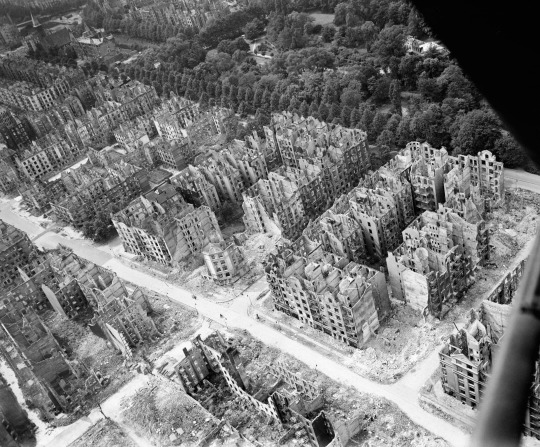
Later in the year, the Allies, thinking forward to the invasion of Normandy and seeing air supremacy as a prerequisite to success, will issue the POINTBLANK directive, aiming their airforces at German aircraft manufacture and industry. The USAAF lose 585 men in a single raid on the ball bearing plants at Schweinfurt and Regensburg in August 1943.
Harris pays lip service to POINTBLANK, continuing to bomb German cities. He embarks on a long campaign against Berlin that winter, deviating occasionally to attack other targets. Berlin, modern, with wide streets, massive ferroconcrete flak towers and sophisticated air defences, resists the assault and doesn't burn. On 31st March 1944, the RAF suffers it's worst day of the war, losing 96 bombers and 691 men on a raid against Nuremberg.
Bombing switches to targets in support of the invasion, both before and after D-Day. Harris will be brought in line and reluctantly sends Bomber Command against targets throughout France. Thousands of French civilians perish under American and British bombs.
Later, as the war in Europe enters it's final phases, the bombers switch back to attacking targets in Germany. They destroy what remains of the German oil industry, and then do the same to it's transport network, crippling it's economy beyond salvage. The intensity and scale of the attacks defy imagination. The Allies drop more bombs on German-occupied Europe in 1945 than they do from 1939 to 1943.
And they attack Dresden.
The Red Army is closing in on Germany's borders and Dresden is a transport hub, shuttling troops and supplies from west to east. It's industries are critical. And it is untouched. It has not been bombed. The rumour is that Winston Churchill has family living there and has ordered the RAF to leave it alone. It's leadership is incompetent and has not prepared for a raid or built large public shelters. It's defences have been stripped, anti-aircraft guns sent to the front or other cities. The RAF only lose 6 bombers, 3 of which are hit by bombs from other aircraft.
The RAF hit neither Dresden's rail yards, nor it's industries, which are concentrated in the suburbs. It targets the old town, densely packed with narrow streets, and it burns. A firestorm rapidly overwhelms it's emergency services and consumes the city. Maybe 25,000 die. Maybe more. USAAF bombers attack the city the following day, hampering rescue efforts. Some of the Americans get lost and bomb Prague instead.
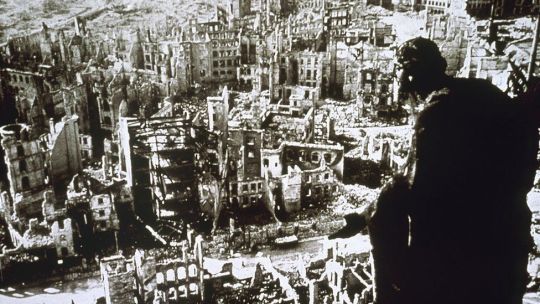
10 days later, the RAF bomb Pforzheim, killing 17,600 people.
In March, the USAAF creates a firestorm in Tokyo. At least 90,000 Japanese die. High-level attacks over Japan are ineffective because the jetstream prevents accurate formation bombing. So the Americans use low-level attacks using napalm incendiary bombs. Bombers return from Tokyo with their aluminium fuselages blackened by smoke. Some bombers, caught in turbulence created by the firestorm, crash.
Japanese cities, their housing traditionally made of wood, are turned to ash and cinder. US bombers drop so many incendiaries on Japan that operations are temporarily suspended because they run out of supplies. Then, in August, they drop atomic bombs on Hiroshima and Nagasaki. Later, one of the justifications offered for the nuclear strikes - and one that dismisses the long-term effects of radiation - will be that they were much less bad than what was already being done to Japan's cities.
55,573 Bomber Command aircrew and around 600,000 German civilians were killed in the campaign to destroy Germany from the air. It was undoubtedly effective. The German economy was dealt massive, decisive blows from which it could not survive and prosper. The lost production, the resources devoted to repairing and restructuring industry, and to defending Germany from the bombers marked a definitive success for the Allies. 30% of German artillery production was devoted to anti-aircraft weaponry. It's aircraft production became so decentralised that the wings, fuselages and cockpits of aircraft would be constructed in different locations and brought to another to be assembled. Complexes were built into tunnels under mountains to protect from attack. Large detachments of workers were organised to repair factories and help industry recover from raids.
But while the bomber's contribution went a long way to winning the war, it remains a war-winning failure. Just like the British before them, German morale did not break. Armies had to conquer the Nazi realm. The navy had to maintain control of the oceans. Air power did not win the war alone.
The bombing campaign can be argued from a position of necessity. Britain had no other way of engaging with Nazi Germany on mainland Europe from May 1940 until mid-1943. This was intolerable to those running the war, both in Britain and abroad. For political, military and economic reasons, Germany had to be bombed.
The morality and ethics of it is a much harder thing grapple with. Wars escalate and radicalise and warp the worldviews of those involved. They are snowglobes of horror and atrocity. Choices that seemed unthinkable at the beginning became obvious and logical the longer the war went on. The lives of enemy civilians mattered far less than the lives of Allied servicemen and women, and amid the escalating evils and devastation perpetrated by Nazi Germany and Imperial Japan the arguments of ruthless men like Harris and the USAAF's Curtis LeMay appeared reasonable. The scale of death and destruction got exponentially larger as technology developed and militaries learnt and became more efficient. Pre-war moralities were abandoned in favour of a victory that had to be total. Bombing shortened the war. It is unknowable if that led to fewer people dying. Or, even if it did, whether that made it the right thing to do in the circumstances.
It is a terrible and grotesque thing to deliberately go out night after night to kill as many civilians as possible in the unproven belief that it will bring about victory. Had the RAF concentrated against industrial and transportation targets, it would likely have had a greater effect on the course of the war and killed far fewer civilians. What was done sits very uneasily with me.
To my mind any moral justification rests on one thing. When, twelve weeks after Dresden, Germany surrendered, the bombing stopped. If the Allies had lost, the killing would have only just started.
Further reading:
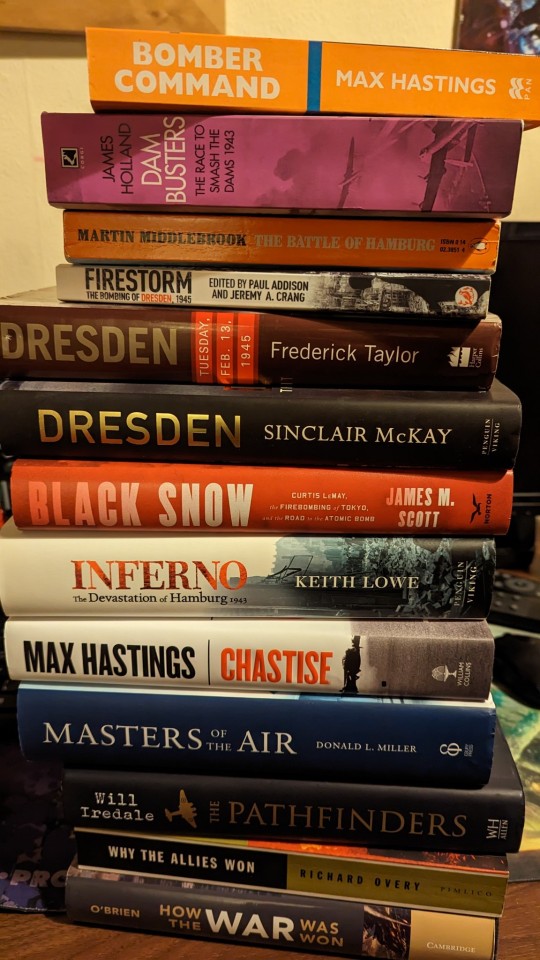
#War is fucking awful#However bad you've imagined war to be it is much much worse#ww2#wwII#second world war#Dresden#For fuck's sake don't read that tube Gladwell#Some of those German civilians probably deserved it. There were a lot of Nazis in Nazi Germany after all.
2 notes
·
View notes
Text
no its not dashiv bombing, that's the Douhet's docrine from the 1920s. but with a different name. Also known as terror bombing in the 40s.
during ww2 it was established that it didn't do anything but cause suffering. then during the us-korean war it was established that it didn't do anything but cause suffering. then during the us-vietnam war it was established that it didn't do anything but cause suffering. then during the us-afghanistan war it was established that it didn't do anything but cause suffering.
this is not a valid military strategy. there is no possible reasoning for this besides cruelty
The entire neighborhood is just gone.


This is the Dahiya doctrine:
The Dahiya doctrine, or Dahya doctrine, is an Israeli military strategy involving the large-scale destruction of civilian infrastructure in order to pressure hostile governments. The doctrine was outlined by former Israel Defense Forces (IDF) Chief of General Staff Gadi Eizenkot. Israel colonel Gabriel Siboni wrote that Israel "should target economic interests and the centers of civilian power that support the organization". The logic is to harm the civilian population so much that they will then turn against the militants, forcing the enemy to sue for peace.
4K notes
·
View notes
Text
Affitto Appartamento Caserta. Bilocale in viale Giulio Douhet. Ottimo stato, secondo piano, con balcone, riscaldamento autonomo, rif. 112817093 | www.immobiliare.it
View On WordPress
0 notes
Text

📷NOTIZIARIO: CASALIS DOUHET MONTECORIOLANO - 17.10.2023 - CASALIS DOUHET - MONTECORIOLANO: IL SINDACO CHIEDE UN INCONTRO CON LA DIREZIONE DELLA SAUIE E CON LA REGIONE CAMPANIA - Desta preoccupazione la situazione... 🎥 https://www.twinssebastiani.it/dettaglio.php?id=10577
1 note
·
View note
Text
Poetessa Valduga ospite speciale alla rassegna per Mario Luzi
La poetessa Patrizia Valduga sarà l’ospite speciale della rassegna annuale “Poeti per Mario Luzi” prevista a Pienza (Siena) il prossimo 9 settembre in Palazzo Piccolomini. Parteciperà anche la giovane poetessa Pamela Addessi (Scuola militare aeronautica ‘Giulio Douhet’), vincitrice del concorso studentesco regionale “Firenze per Mario Luzi” 2023, con la poesia ‘Violata’. La rassegna,…
View On WordPress
1 note
·
View note
Text

The old train station.
#douhet#original photographers#photography#photographers on tumblr#black and white#Charente-Maritime#train station
8 notes
·
View notes
Text
Ronnie Bell Following
Fokker G-1
The Fokker G.I was a Dutch heavy twin-engined fighter plane comparable in size and role to the German Messerschmitt Bf 110 and the British Mosquito. Although in production prior to World War II, its combat introduction came at a time when the Netherlands was overrun. The few G.1s that were mustered into service were able to score some victories, but ultimately the aircraft was withdrawn from operations, and the remainder of the production run was taken over by the Luftwaffe as trainers.
The G.I, given the nickname le Faucheur ("reaper" in French), was designed as a private venture in 1936 by Fokker chief engineer Dr. Schatzki. Intended for the role of jachtkruiser, "heavy" fighter or air cruiser, able to gain air superiority over the battlefield as well as being a bomber destroyer, the G.1 would fulfill a role seen as important at the time, by advocates of Giulio Douhet's theories on air power. The Fokker G.I utilized a twin-engined, twin-boom layout that featured a central nacelle housing two or three crew members (a pilot, radio operator/navigator/rear gunner or a bombardier) as well as a formidable armament of twin 23 mm (.91 in) Madsen cannon and a pair of 7.9 mm (.31 in) machine guns (later eight machine guns) in the nose and one in a rear turret.
Besides its main mission, the G.1 could be configured for ground attack and light bombing missions (it could carry a bomb load of one 400 kg/882 lb bomb or combinations of two 200 kg/441 lb or 10 26 kg/57 lb bombs).
The design and construction of the prototype (registered as X-2) was completed in just seven months. At its introduction at the Paris Air Show in November 1936, even before its first flight, the G.I was a sensation, appearing in a purple and yellow finish (evocative of the Spanish Republican colors, thought to be Fokker's first export customer
Like all Fokker aircraft of the period, the G.I was of mixed construction; the front of the central pod and the tail booms were built around a welded frame, covered with aluminium plating. The back of the central pod, however, as well as the wings, had a wooden frame, covered with triplex, a technique also used in Fokker's successful passenger aircraft at that time.
The G.I prototype, powered by 485 kW (650 hp) Hispano-Suiza 14AB-02/03 engines, had its first flight at Welschap Airfield, near Eindhoven on 16 March 1937 with Karel Toman-Mares at the controls. Later, Emil Meinecke took over much of the test flights. The maiden flight went well, but a subsequent test flight in September 1937 ended with a supercharger explosion that nearly caused the loss of the prototype.The accident prompted a replacement of the Hispano-Suiza engines with 559 kW (750 hp) Pratt & Whitney SB4-G Twin Wasp Junior engines.
Via Flickr
4 notes
·
View notes
Text
One aspect of basing the Fire Nation on the USSR and Nazi Germany, at least in part:
In real life totalitarianism had a twisted sense of humor baked into the premises in both the forms of Bolshevism and Nazism. The whole 'Work Makes You Free' on slave labor camps is the most obvious example of this but it's threaded through them. The early 20th Century totalitarians and their modern would be emulators were all trolls in the modern sense.
They were this way *DELIBERATELY*.
So in that exact same fashion, how does Sozin pull off a worldwide attack on four air temples with the greatest of ease?
Airships. Since nobody else has them, the Fire Nation has no concept of offensive air war and uses extremely impractical and highly flammable zeppelins to dominate the air, but after a century of virtual hegemony in the air never even bothers to develop any kind of strategic air power, because as far as it's concerned when Golden Boy Iroh is steamrolling the enemy across the world it will win the ground war (and in another nod to IRL history the ground generals prevent an independent air arm from existing, as otherwise you'd see the Fire Nation invent WWII scale bombing raids and essentially at that point they really would pull off the Douhet trick).
The Fire Nation has an unpleasant habit of trolling the Water Tribes by vast steel battleships and stomping on the memory of the Air Nomads they exterminated by flaunting their airships. For the Earth Kingdom it developed tanks they can easily see coming and artillery as in modern indirect fire artillery, purely to taunt the Earthbenders by their feeling the vibrations but time-on-target barrages literally turning them into hamburger.
In short, as the analogues of Imperial Japan they have at their best combined-arms forces in the 20th Century style with superhuman super-soldiers for roles that nothing in real war matches. And they use THIS against societies who are 18th Century China at the best down to Bannermen equivalents (Earth Kingdom) and against magic Inuit (the Water Tribes).
Among other elements that they also invent are railroads and equivalents of automobiles, meaning that their cities are cleaner than the Earth Kingdom, which has the ancien regime literal shit-filled cities with plenty of dead animal carcasses, and the Water Tribes are...magic Inuit who live in igloos but where they have a lot of *Waterbenders* in *Permafrost* are such dangerous opponents that they do more damage than the Earth Kingdom to Firebenders.
So at least part of why their propaganda is so believable is that the Fire Nation is in the magic 20th Century and the rest of the world at best is in the Qing era and it's a long slide downhill from there in modern terms. The Fire Nation is DELIBERATELY shown as more like modern Westerners and this analogy is played up to make the evils its army does more disturbing, not less, because they do the Rape of Nanking and Kill All, Burn All, Loot All offensives straight out of the historical actions of Imperial Japan.
And in the first AU there's also the Red-Blacks, who are mostly based on the KGB and led by Lavrenti Beria in the first arcs (down to the most horrible things Beria did, which is ultimately how he dies when he picks the wrong target out of spite) and Nikolai Yezhov in the second.
In the second the Eyes and Ears are the SS down to the lightning runes, a culture of marauding murder for murder's sake, and being racist blood-supremacists who preach a heavily distorted Fire Nation ideology directly patterned on the ideology of the SS. And as the EEs even get an alliterative shorthand name that translates to something much more boring than their reputation suggests.
Real life totalitarian states, or even the Tsarist Russia/Tokugawa Shogunate kind have powerful secret police agencies that are states within the state. The Dai Li are the only canonical nod to this, but the Fire Nation would absolutely have them too, there's no other way for autocracy to exist in monarchical form.
#fire nation#by fire and water and earth and air#dragon of the west#totalitarianism is bad#the fire nation gets a kgb and an ss clone#both are equally despicable but in different ways#the kgb clone is mostly domestic#the ss clone fights in the war and proves LEEROY JENKINS like the real life ss#the ultimate head of the ees in Dragon of the West is a chicken farmer with ugly glasses#yes Iroh has magic firebending Heinrich Himmler
2 notes
·
View notes
Text
The Reaction Against the End of History

Recently reading Azar Gat’s Fascist and Liberal Visions of War: Fuller, Liddell Hart, Douhet, and other Modernists I happened upon his characterization of a “fascist minimum,” which is something like C. S. Lewis’ attempt to define “mere Christianity.” So here is Gat’s mere fascism:
“Fascism emerged on the heels of industrialization, urbanization, and the growth of mass society. Those who shared in the proto-fascist and fascist ‘mood’ rebelled against bourgeois culture, with its ‘decadent’ materialism, commercialism, atomistic and alienating individualism, and liberal-humanitarian values. They dreaded the further advance of plebeianism, mediocrity, and triviality expected with growing democratization. Espousing idealism and exalting youth, elementary dynamism, and vitalism, they called for comprehensive spiritual and cultural rejuvenation and the creation of a new man within radically reconstructed society. They sought to overcome divisive parliametarianism, capitalism, and socialism through the application of communal solution which would mobilize the energies and loyalty of the masses around unifying natural traditions, myths, and ideals. At the same time, they held that government should firmly remain in the hands of a worthy élite, the creator and leader of the New Order.” (Azar Gat, Fascist and Liberal Visions of War: Fuller, Liddell Hart, Douhet, and other Modernists, Oxford: Clarendon, 1998, p. 4)
As soon as I read this I immediately thought of the final paragraph of Francis Fukuyama’s 1989 essay “The End of History?” (1989):
“The end of history will be a very sad time. The struggle for recognition, the willingness to risk one’s life for a purely abstract goal, the worldwide ideological struggle that called forth daring, courage, imagination, and idealism, will be replaced by economic calculation, the endless solving of technical problems, environmental concerns, and the satisfaction of sophisticated consumer demands. In the post-historical period there will be neither art nor philosophy, just the perpetual caretaking of the museum of human history. I can feel in myself, and see in others around me, a powerful nostalgia for the time when history existed. Such nostalgia, in fact, will continue to fuel competition and conflict even in the post-historical world for some time to come. Even though I recognize its inevitability, I have the most ambivalent feelings for the civilization that has been created in Europe since 1945, with its north Atlantic and Asian offshoots. Perhaps this very prospect of centuries of boredom at the end of history will serve to get history started once again.” (Francis Fukuyama, “The End of History?” The National Interest, Summer 1989)
An enormous commentary rapidly grew up around Fukuyama’s essay, and also around what may be considered its companion piece, Samuel P. Huntington’s “The Clash of Civilizations?” (1993). These two essays—both subsequently turned into books—defined grand strategy discussions during the 1990s, and they continue to echo today. As I have discussed both of these essays in other blog posts, I don’t want to do that at present. The question that interests me at present is why Azar Gat’s definition of a minimal fascism immediately brought to my mind Fukuyama’s sketch of the end of the history.
The connection between these two passages is the properties ascribed to a society seen, from the one perspective, as the end point of social development, while, seen from another perspective, is the point of origin for a reactionary social development. What Fukuyama described as the end of history, the end of the ideological conflict that had been making history, is what Gat described as the conditions of discontent prior to the appearance of a new ideology explicitly opposed to the values of the reigning liberal order.
So while Fukuyama in this original essay (he has published numerous clarifications and elaborations since then) speculates that boredom may eventually bring about the end of history, Gat’s understanding of a fascist minimum is that it is not boredom, but contempt and disgust that eventually allows for the transcendence of the end of history. What for Fukuyama is an end point for civilization, is for Gat’s fascist minimum a point of departure. All of the conditions that Fukuyama describes are the conditions that Gat identifies as the raison d’être for fascism.
For Fukuyama, the end of history is the culmination of the liberal world order, the end point of possible development for liberalism—liberalism triumphant and unchallenged by any alternative ideology. And this explains a lot. Liberalism in power becomes aesthetically and morally repellent—smug, self-satisfied, lazy, undisciplined, permissive, indulgent, and, ultimately, self-destructive—to the point that it provokes a rebellion not out of boredom, but out of disgust. However, it is entirely possible that reactionaries follow a trajectory of becoming bored first, before formulating a reaction to the society that they found to be mind-numbingly banal, so Fukuyama may be right about the role of boredom, except that social evolution does not end with this boredom.
In the political cycles that have characterized western civilization, we often find the fascist right appears initially as an aesthetic movement, as it is the artists who are among the first to feel the corruption of liberalism. For example, in Filippo Tommaso Marinetti’s “Manifesto of Futurism” (1909) we find many of themes of the “fascist minimum” given explicit expression long before fascism as a political movement gained ground in Italy.
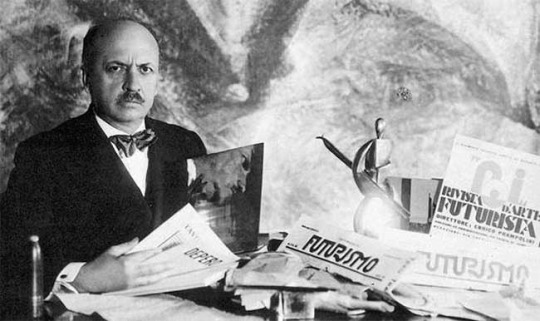
10 notes
·
View notes
Photo

Pure sul Milite Ignoto si avventano. Pure su di lui. Giorgia Meloni e Matteo Salvini hanno chiesto di deporre una corona d’alloro al Milite Ignoto. A favor di telecamere, ovviamente. E non un giorno qualsiasi. No. Ma il 2 giugno. Festa della Repubblica. E ora piagniucolano perché si sono sentiti dire di no, povere stelle. Si sono sentiti dire di no perché il 2 giugno è il giorno in cui sta al Presidente della Repubblica, carica che rappresenta indistintamente tutti gli italiani, tutta la nazione, compiere questo gesto alla memoria di chi per questa nazionale ha dato la vita. Ma loro no, vogliono politicizzare anche il Milite Ignoto. E guardate, non è solo spudoratezza, mancanza totale di vergogna e di rispetto per l’Italia. Ma è una strategia precisa di distruzione dell’Unità Nazionale. Un po’ come quando Salvini indossava le divise della Polizia o dei Carabinieri o dei Vigili del Fuoco. Stesso principio: prendere qualcosa che è di tutti gli italiani, che appartenete a tutti e renderlo ragione di divisione. Sei contro di me che indosso la divisa dei Vigili del Fuoco? Allora sei contro i Vigili del Fuoco. Li odi. Mentre io li amo. Ora vogliono farlo anche con il Milite Ignoto. Il 2 giugno. Ancora qualche anno fa, a proposito del 2 giugno, Salvini scriveva su Facebook: “Non c’è un cazzo da festeggiare. Buonanotte”. Adesso scopre che esiste pure il Milite Ignoto. Che rappresenta tutti gli italiani che per l’Italia hanno dato la vita. Quell’Italia che lui chiamava “Italia di merda”, che voleva dividere in due rendendo vano il sacrificio di quei ragazzi morti, ma che oggi vuole ancora più insultare depositando ipocritamente quella corona d’alloro. Quando credi che abbiano toccato il fondo dell’ipocrisia e della spregiudicatezza, eccoli che prendono una vanga e iniziano a scavare ... Tutto in Italia può essere sporcato, insozzato dalla propaganda dei partiti. Tutto. Ma non il Milite Ignoto. Non quello. Perché il Milite Ignoto nasce per creare un momento di “concorde armonia”. Perché il Milite Ignoto appartiene a “Tutta l’Italia”. Perché il Milite Ignoto è “figlio e fratello di tutti”, spentosi nella difesa della “Madre Comune”. Giorgia Meloni e Matteo Salvini, che non rappresentano la nazione così come il Capo dello Stato Sergio Mattarella, che rappresentano solo dei partiti, delle “parti” e non “Tutta l’Italia” richiamata da Douhet, con la loro "idea" di depositare una corona il 2 giugno al Milite Ignoto stanno solo volutamente e consciamente consumando l’ultimo oltraggio alla memoria di ogni simbolo che rappresenti l’unità della Patria. Per pura, feroce, spietata propaganda politica. Per pura, famelica, vorace, inestinguibile fame di consenso e di potere. Se in Italia avessimo un vero elettorato i destra, con un vero senso della Patria, voi due sareste da loro presi e cacciati in malo modo al confine più vicino. Ma fortunatamente, al vostro seguito, non avete dei patrioti. Avete solo dei fan da social. (Emilio Mola)
8 notes
·
View notes
Text
Buck Danny vol.2: The Secrets of the Black Sea

Buck Danny vol.2: The Secrets of the Black Sea Buck Danny 45 -- Les secrets de la mer Noire Cinebook ltd 2010 Written by Jacques De Douhet Illustrated by Francis Bergèse Coloured by Frédéric Bergèse Imadjinn sarl It is the end of the Cold War—supposedly the era of glasnost and perestroika. The Soviet Union is about to come apart at the seams. Buck Danny is sent as an observer and adviser to help the Russian army deal with its arsenal of nuclear weapons and some of its rogue units. But old Communist habits die hard, and some of the Red Army hardliners have other plans. The pilot finds himself over the Black Sea, where he locates some unusual prototypes. This is my new favourite series. It also holds the dubious distinction of being one of my highly recommended all time favourite series, it is in my top 5 series now and if this doesn’t tell you how good it is then I don’t know what will. There is something absolutely magical about the book, it’s characters and how everything comes together and creates this stunning story that is for everyone, not just fans of war books and stories. I am such a fan of this and I cannot believe it’s taken me this long to find it. When I talked to Jerome about working with them I already had one title that I really liked and wanted to review, then I thought let’s try this one too, nearly an afterthought but ya know sometimes you find something truly and utterly amazing when you aren’t looking for it or expecting it. The way this is being told is perfectly done. The story & plot development keeps moving forward through how we see the sequence of events unfold as well as how the reader learns information, all of which is presented extremely well. How the story is woven in, through, around and entwined with the character development that we see just impresses me like so few can. The character development we see through the situations and circumstances that they find themselves in continues to have them grow and evolve as people. The pacing is superb and as it takes us through the pages pulling back the layers of the story and revealing the twists and turns along the way is expertly rendered. How we see the structure of the book, with its layers and multiple locations and the introduction of new characters is done so well. Everything we see here works together to create the ebb & flow for the book and I gotta say it’s a joy to read a 54 page book that doesn’t feel so long when it's being read. The interiors here are so incredibly mind bogglingly well done. The linework is divine and how we see the various techniques and weight within the linework and how this showcases the attention to the detail work is astounding. The devil’s in the details, that’s the saying right? Well I wouldn’t be surprised if he made a deal with the devil for this level of talent and skill that he demonstrates. From how we see the various aircraft and how well detailed and shown that they are to the characters with their own unique individual quirks, you have to see them for yourself, it all has this incredible consistency to it. How we see backgrounds being utilised is wonderfully done and they not only enhance the moments or show us how tight quarters can be they bring us this great depth perception, sense of scale and the overall sense of size and scope to the story. The utilisation of the page layouts and how we see the angles and perspective in the panels show such a masterful eye for storytelling. The colour work is divine. It really manages to bring us that old school feel and yet how the hues and tones within the colours are being utilised to create the shading, highlights and shadow work is sublime. There is a true mastery of craft that we see here and how to inherently know how the shading should be and how the colours work on the subtle side is breathtaking. This is going to be the one book you think you’ll skip or pass on that will gnaw in the back of your mind till you pick one up. Then it’ll all be over. This is so masterfully written, and gorgeously illustrated it reminds you that this is why comics were created in the first place.

2 notes
·
View notes
